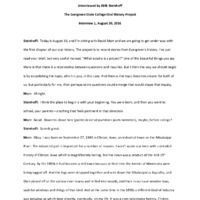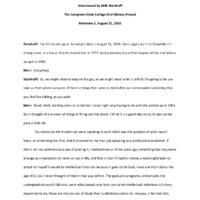David Marr Oral History Interview
Item
- Identifier
- Title
- Date
- Creator
- Contributor
-
MarrDavid
-
David Marr Oral History Interview
-
August 30, 2016
-
August 31, 2016
-
September 8, 2016
-
David Marr
-
Eirik Steinhoff
Position: 262 (18 views)


